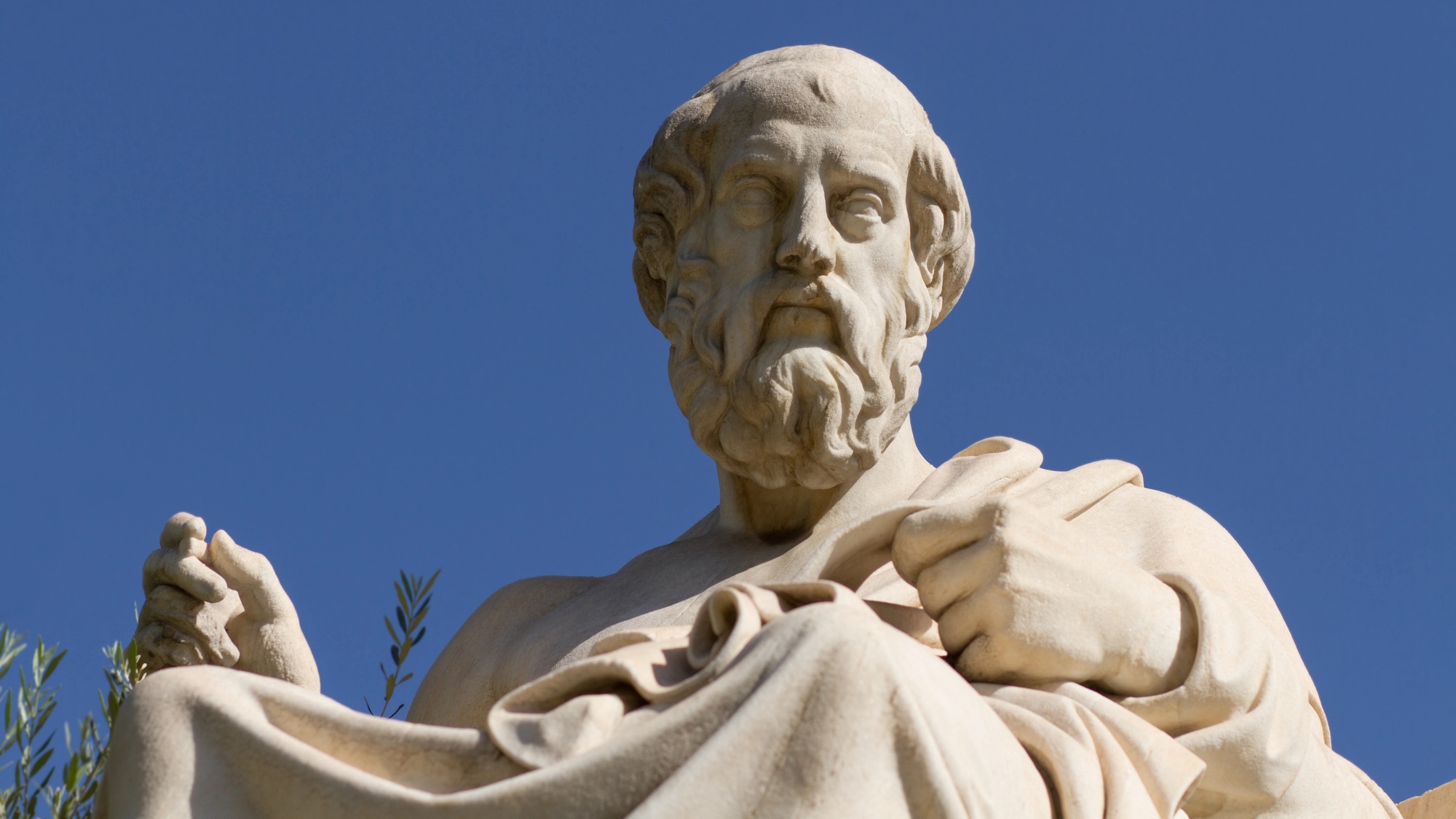
A research team’s “bionic eye” deciphered thousands of new words hidden within an ancient scroll carbonized during the eruption of Mount Vesuvius—and the new text points to the long lost, potential final resting place of the philosopher Plato.
The 1,800-scroll collection, located in the estate now known as the “Villa of the Papyri,” was almost instantaneously incinerated during the historic Mount Vesuvius eruption in 79 CE, before being buried in layers of pumice and ash. The latest discovery is part of ongoing global efforts focused on the ancient Greek library believed to belong to Julius Caesar’s father-in-law.
Although rediscovered in 1792, the trove of text remained almost entirely inaccessible due to the carbonized parchment’s fragility and blackened writing. In recent years, however, contributors to projects like the Vesuvius Challenge have worked to finally reveal the charred artifacts’ potentially invaluable information. In February, the project’s organizers announced that a team successfully translated 2,000 characters within a scroll through a combination of machine learning software and computer vision programming. Now, a separate group’s “bionic eye” has uncovered even more.
[Related: 2,000 new characters from burnt-up ancient Greek scroll deciphered with AI.]
According to Italian news outlet, ANSA, experts utilized infrared hyperspectral imaging alongside a relatively new approach known as optical coherence tomography (OCT) to see through the carbonized material. OCT employs cross-sectional, high-resolution imagery most often used by optometrists to photograph the back of the eye. In this case, however, combining the two tools allowed researchers to bypass the layers of carbon to read a major portion of the scroll by detecting faint evidence of handwriting that human eyes can no longer see.
Now, it appears the team helped solve a major mystery within the history of philosophy—the location of Plato’s grave. After translating the section, it appears Plato was finally buried in a garden near a shrine to the Muses at the Platonic Academy in Athens. What’s more, the text details the pivotal philosopher’s last night before reportedly succumbing to illness. Plato, suffering from a high fever, unfortunately wasn’t a fan of a nearby musician’s attempt to comfort him by playing “sweet notes” on flute. According to the scroll, he even went so far as to criticize their “scant sense of rhythm.”
The section also offers a revised timeline of Plato’s life by stating that the philosopher was sold into slavery in either 404 or 399 BCE. Before the new discovery, historians believed he was enslaved in 387 BCE.
Researchers aren’t stopping here, either. As Interesting Engineering notes, the team will use their “bionic eye” for further scans through 2026, while the Vesuvius Challenge will pursue its own methods to discover even more insights into the scrolls.
The post A ‘bionic eye’ scan of an ancient, scorched scroll points to Plato’s long lost gravesite appeared first on Popular Science.
Articles may contain affiliate links which enable us to share in the revenue of any purchases made.
from Popular Science https://ift.tt/Z9eRxkO




0 Comments